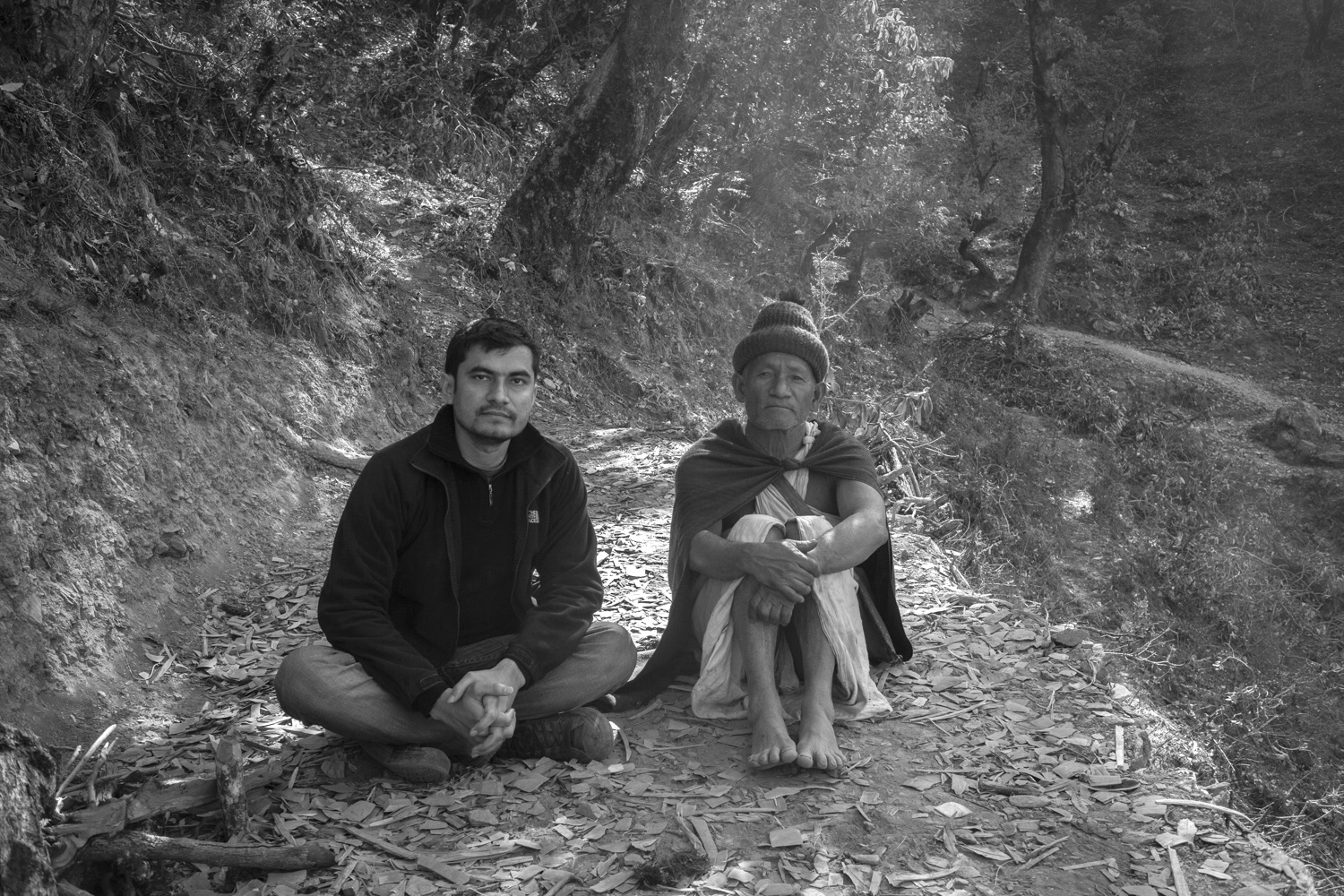
News
Beyond the Frame
Play audio version
DJP Mentor Kishor Sharma Forges a Collaborative Path in Visual Storytelling
January 8, 2024
KATHMANDU, Nepal – Kishor Sharma’s photography and film work spans a wide range of subjects and locations across Nepal and South Asia. He has done traditional photojournalism work for publications such as Time Magazine, The Guardian, and Nepali Times. But, perhaps Sharma’s most compelling work is his longer-term photography and film projects, which investigate questions of communities and change. One of these projects is Sharma’s documentation of the nomadic Raute people of mountainous Nepal, which has been finalized into a photography book called Living in the Mist, published this year. The black-and-white images of Sharma’s book paint a vivid – and visually moving – portrait of a small Indigenous community whose nomadic lifestyle conflicts with the modern world. Sharma’s work with the Raute community – with whom he has spent a great deal of time since beginning his research in 2011 – has largely been a passion project. Without formal funding initially, Sharma’s work continued for years “out of my own interest,” he says. The result is a photographic immersion that feels both mythological and culturally honest.
Sharma’s visual work – which also includes filmmaking – creates moments of deeper reflection in an era of instantly shared images on social media. “I’m a bit old school, I think. I like projects where I could just spend some time and then sort of build a project,” he says. In addition to Living in the Mist, Sharma has been producing a series of short films and videos for the environmental organization KTK-BELT, which promotes Indigenous knowledge of the natural world. These short pieces highlight local natural guides and farmers who share their perspectives on natural life and how it interacts with their own lives. Sharma considers his subjects “farmer-professors.” “There’s like the importance of the academic expertise but also the expertise of the living experience,” he says.
Collaboration and Mutual Participation
Beyond merely keeping focus on the Indigenous perspective, Sharma aims to “share the photography or videography technique with the participant.” It’s a “collaborative sort of project,” he says. Collaboration and mutual participation between photographer/director and subject seems to be a central theme of Sharma’s career. Sharma has a bachelor’s degree in business from Tribhuvan University in Kathmandu, a master’s in mass communication from Purbanchal University, and he received a diploma in photojournalism in 2014 from the Danish School of Media and Journalism. Sharma has been teaching photography to students and the public continuously ever since completing his degrees. Through university classes and workshops, he hopes to enrich photography and film education in Nepal, which was much less robust during his youth. Beyond bringing visual media education to Nepal as a whole, he has found particular value in bringing it to marginalized communities, such as persons with disabilities.
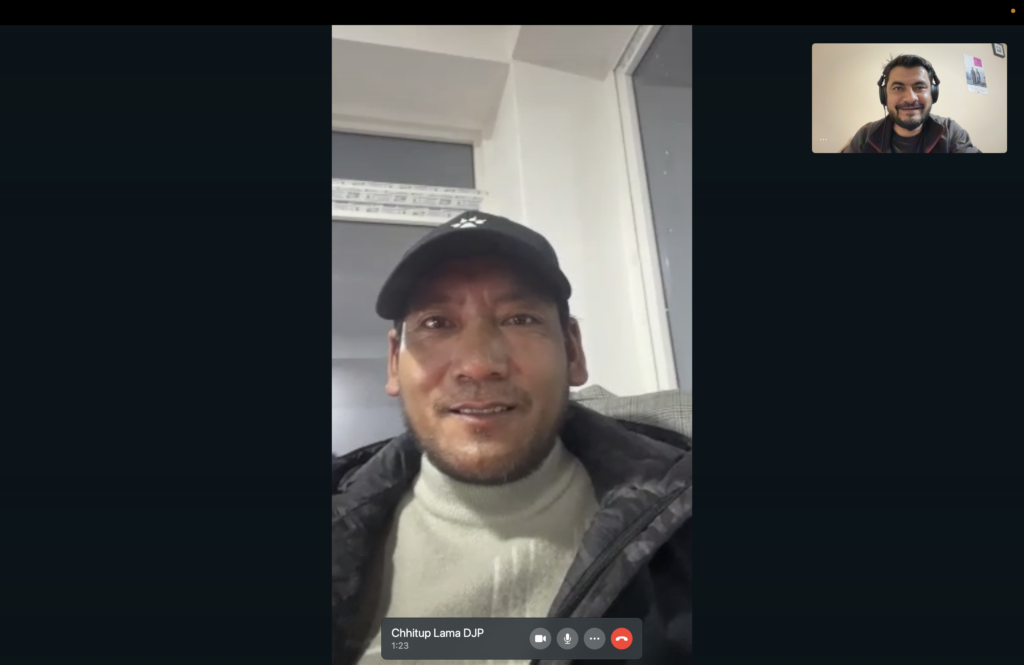
Sharma was recently introduced to Jody Santos, executive director of the Disability Justice Project (DJP). He was inspired by the filmmaking and disability-focused mission of the DJP and eager to connect “this idea of sharing the visual technique with the storytelling idea and the issue of disability inclusion.” Sharma was assigned to work as a mentor to one of the DJP’s new fellows from Nepal — Chhitup Lama.
Lama leads HEAD Nepal, a disability inclusion organization based in the country’s Himalayan region. HEAD Nepal has been supporting Nepalis with disabilities since 2011. Lama has been the subject of several films already, and Sharma remembers Lama remarking, “Now I want to be behind the camera.” After being accepted as a DJP fellow, Lama was enthralled browsing through previous fellows’ work. He felt inspired by the term “disability-inclusive filmmaking.” With a touch of whimsy, Lama remembers thinking, “Why not me? Even [though] I cannot see, let’s make a film!”
Teaching the Technical Skills of Filmmaking
Both Sharma and Lama are from rural regions of Nepal. Sharma grew up in the lowland Bara district (although he moved to Kathmandu at age 10), and Lama is from the mountainous Humla district in mid-western Nepal. Lama faced significant challenges going to school in the 1990s, both in terms of physical and societal obstacles. He recalls how the landscape he grew up in was beautiful yet “almost completely inaccessible” to those with disabilities given the geography and lack of transportation. In school, Lama wasn’t able to see the blackboards or access the lesson books. He had to learn by listening to his teachers’ lectures and then commit the lessons to memory. Lama went on to earn degrees in social entrepreneurship from the Kanthari International Institute India and an M.A. in English literature from Tribhuvan University. Reflecting on his educational success, he says, “one of the beautiful parts of life so far, what I learned is I love, you know, difficulties, challenging problems.”
Since 2011, Lama has run and expanded HEAD Nepal, which now offers educational, vocational, and counseling services to both children and adults with disabilities. Informed by his own path, Lama emphasizes respect for people’s dignity: “When we work with a person with a disability, we see them with their rights,” he says. HEAD Nepal takes a “bottom-up approach” where “the community… are the key stakeholders.”
This focus on doing work with the consent and active participation of community members is perhaps what bonds Sharma and Lama in their work with the DJP. With these mutual goals in the background, their relationship so far has focused on the technical skills of filmmaking. With several online training sessions under their belt (and plans to meet in person soon), Sharma has been teaching Lama filming and interviewing techniques and visual image concepts. For the fellowship, Lama will complete a number of video assignments, culminating in a short documentary film.
There are some real challenges to the mentorship, both acknowledge. Because of his disability, Lama says it can be difficult “to focus the camera and sometimes to zoom in and zoom out.” But, these are welcome challenges as he seeks to mix up his work at HEAD Nepal: “I want to do something different, and that gives me some energy. That gives me some fun and … of course, happiness.” With new skills under his belt, Lama hopes to integrate more photography and filmmaking projects into his leadership work at HEAD Nepal. Sharma, for his part, is eager to both teach and learn from Lama as they continue their partnership.
Sam Norton is a writer and video editor who lives in the USA between New Hampshire and Massachusetts.
News From the Global Frontlines of Disability Justice
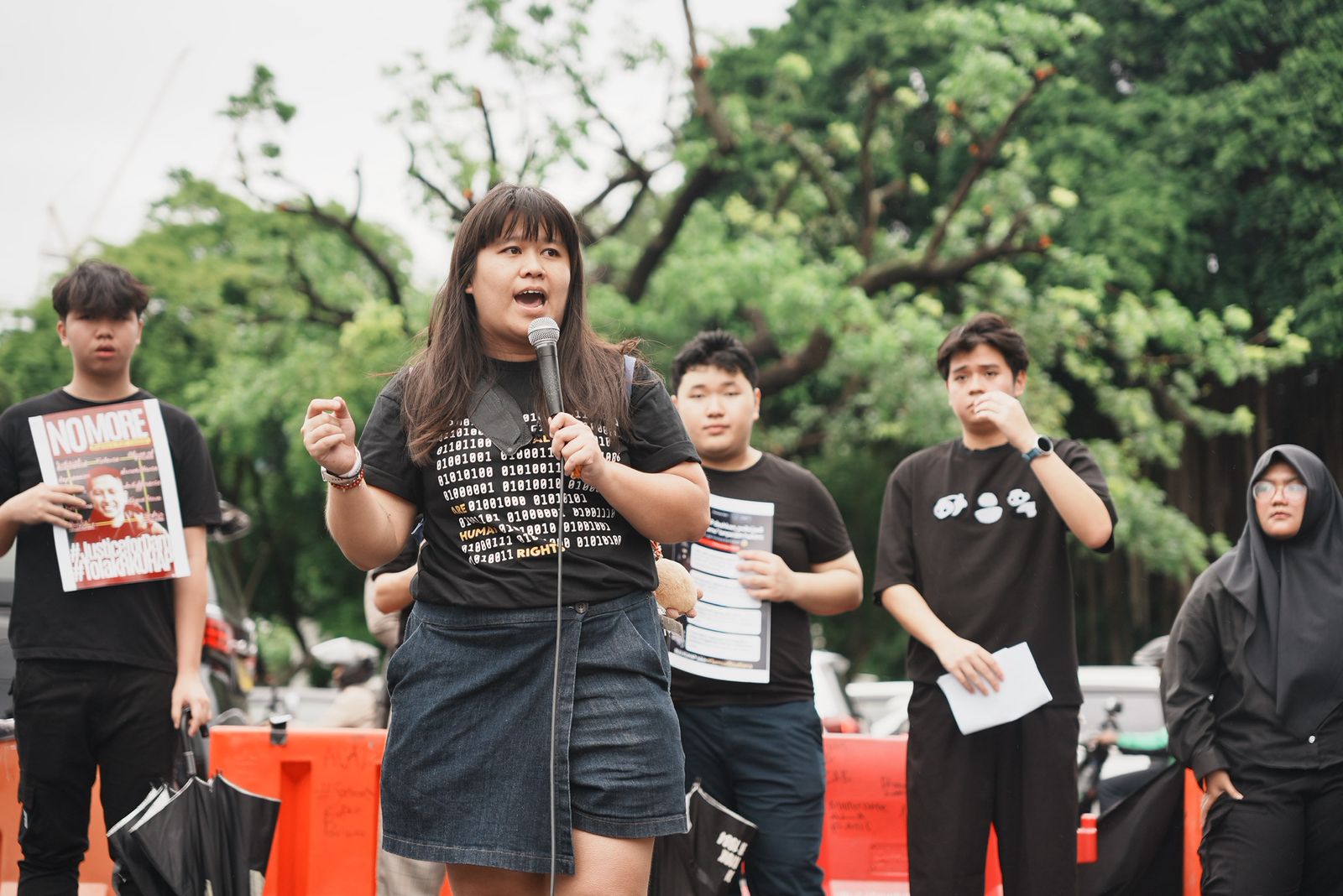
Disability and Due Process
As Indonesia overhauls its criminal code, disability rights advocates say long-standing barriers are being reinforced rather than removed. Nena Hutahaean, a lawyer and activist, warns the new code treats disability through a charitable lens rather than as a matter of rights. “Persons with disabilities aren’t supported to be independent and empowered,” she says. “… They’re considered incapable.”

Disability in a Time of War
Ukraine’s long-standing system of institutionalizing children with disabilities has only worsened under the pressures of war. While some facilities received funding to rebuild, children with the highest support needs were left in overcrowded, understaffed institutions where neglect deepened as the conflict escalated. “The war brought incredibly immediate, visceral dangers for this population,” says DRI’s Eric Rosenthal. “Once the war hit, they were immediately left behind.”

The Language Gap
More than a year after the launch of Rwanda’s Sign Language Dictionary, Deaf communities are still waiting for the government to make it official. Without Cabinet recognition, communication in classrooms, hospitals, and courts remains inconsistent. “In the hospital, we still write down symptoms or point to pictures,” says Jannat Umuhoza. “If doctors used sign language from the dictionary, I would feel safe and understood.”
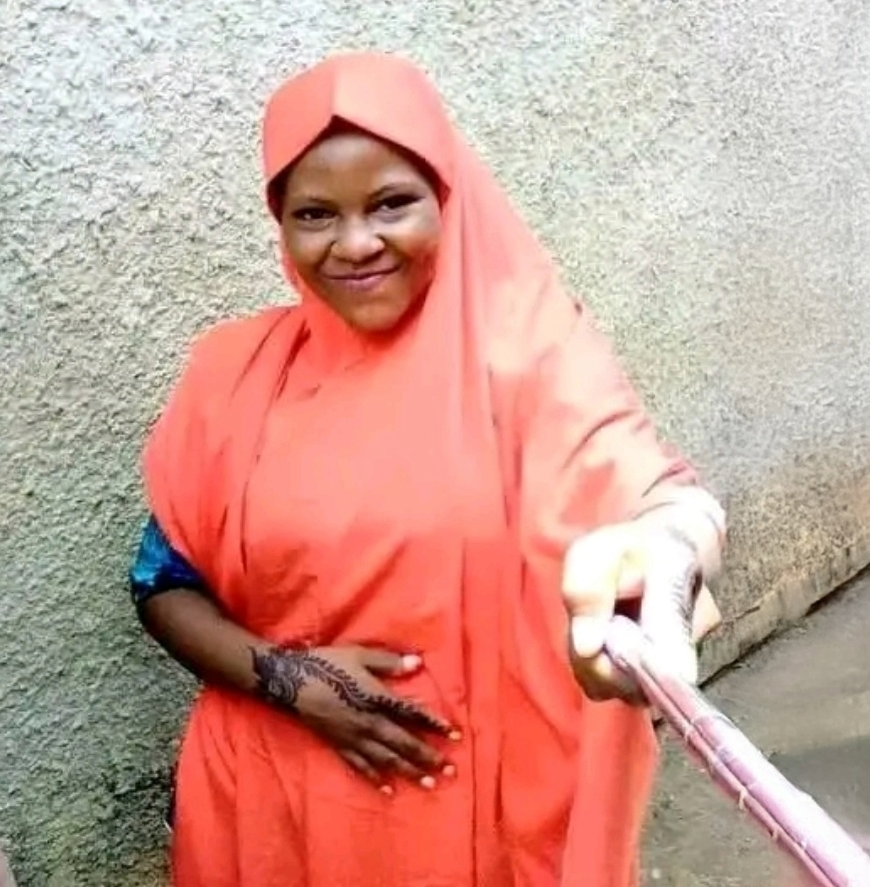
Failure to Inform
Zulaihatu Abdullahi dreamed of finishing school and building a home of her own. But at 19, she died of untreated kidney disease because no one could communicate with her in sign language. Her story reveals how Deaf Nigerian women are often left without lifesaving care. “If only she had access to healthcare where someone could guide her… explain each step, she might still be here,” says Hellen Beyioku-Alase, founder and president of the Deaf Women Aloud Initiative.
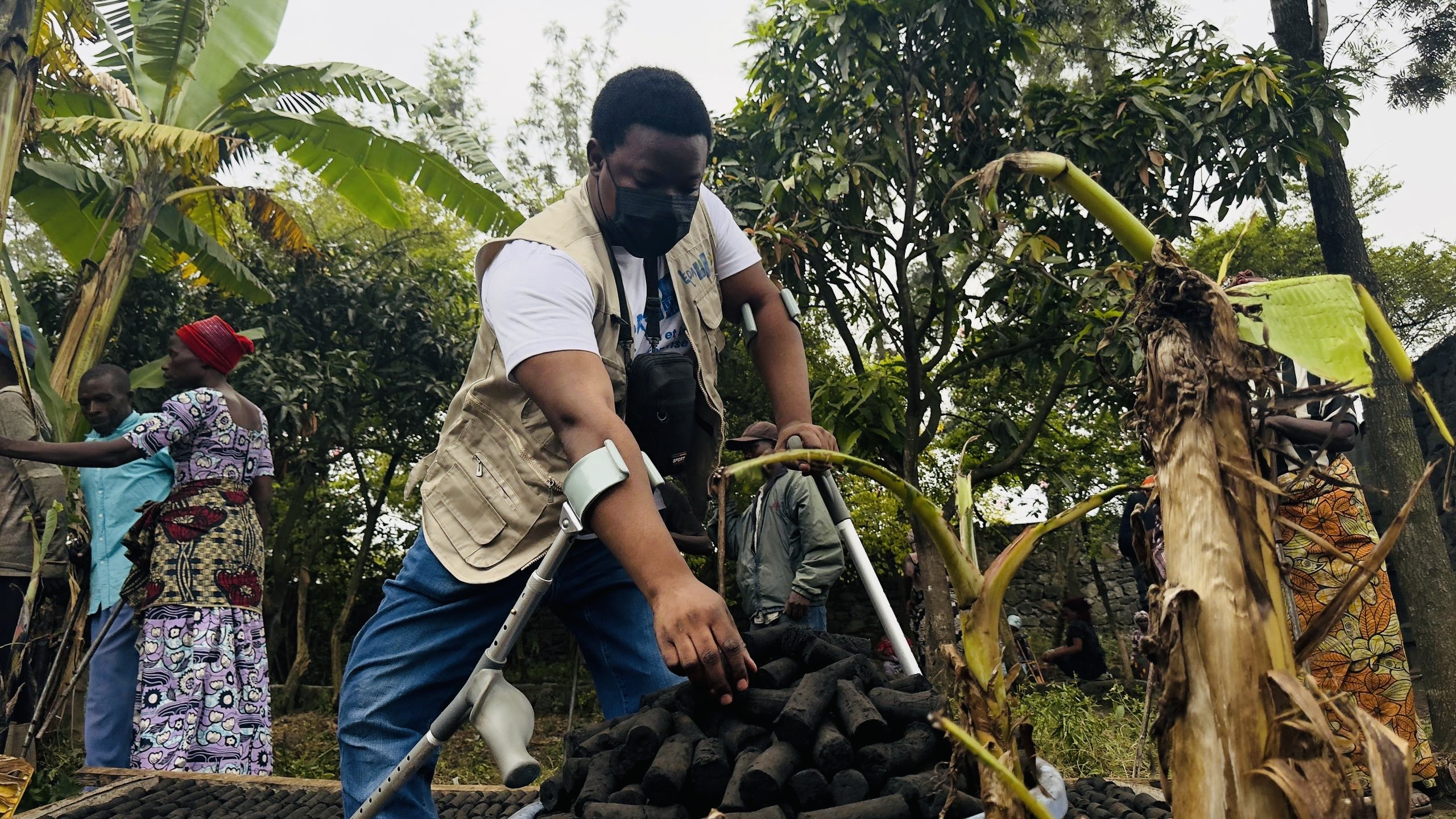
Disability in the Crossfire
In Goma, Democratic Republic of Congo, ongoing conflict and forced displacement have hit people with disabilities hardest. Rebel groups seized supplies from a clean cooking initiative designed to support displaced people with disabilities, leaving many trapped without aid. “It is still a big difficulty for authorities or government or humanitarian organizations to make a good decision which includes everyone,” says Sylvain Obedi of Enable the Disable Action.
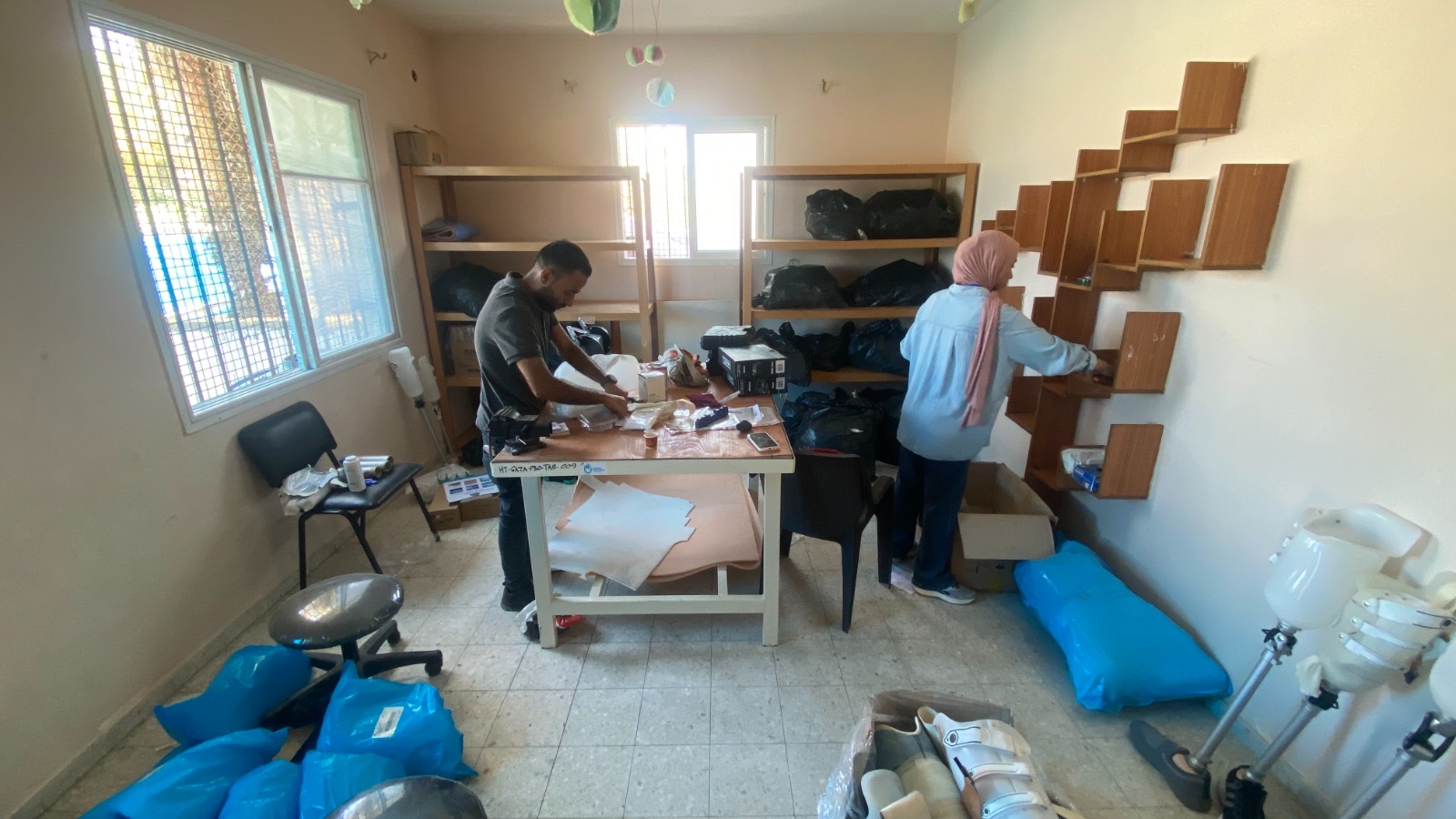
Gaza’s Amputees
At the Nahla Prosthetics & Orthotics Center in Gaza, staff wake up each day wondering if it’s safe to open before treating a handful of people in need of new limbs, adjustments, or psychosocial support. With famine declared in Gaza City and aid restricted, the center faces mounting shortages of materials and trained technicians. “Our colleagues call the situation a nightmare with no end,” says Zaid Amali, Humanity & Inclusion’s senior advocacy officer in Palestine.